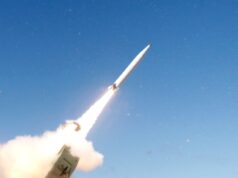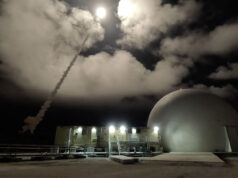Northrop Grumman has received authorisation to proceed with low rate initial production of Surface Electronic Warfare Improvement Program (SEWIP) Block 3 systems.
“Milestone C approval and the start of LRIP are significant milestones for the SEWIP Block 3 program,” said Captain Seiko Okano, the US Navy’s Major Program Manager of Above Water Sensors in a release.
“SEWIP Block 3 is a critical capability that the Fleet needed yesterday to pace the evolving anti-ship cruise missile threat. We must continue to push to deliver this critical electronic warfare improvement to the Fleet on schedule and cost.”
SEWIP Block 3 is the third in a series of block upgrades of the AN/SLQ-32 electronic warfare system which provides electronic attack capability improvements required to keep pace with evolving anti-ship missile threats, say the company.
“I am very proud of the entire team in achieving this significant engineering milestone despite the complexities of pursuing such a demanding technological goal,” said Ingrid Vaughan, vice president and general manager, navigation & maritime systems division, Northrop Grumman Mission Systems.
“The relentless commitment of the U.S. Navy Program Executive Office Integrated Warfare Systems (PEO IWS) and Northrop Grumman team in developing this revolutionary electronic attack capability will dramatically assist our Fleet in pacing 21st century threats.”










Never heard of this, so after a quick butchers, I found this, which I’ve cut and pasted in which to help anybody else who is wondering what it is and does:
The US Navy’s AN/SLQ-32 ECM (Electronic Countermeasures) system uses radar warning receivers, and in some cases active jamming, as the part of ships’ self-defense system. The “Slick 32s” provides warning of incoming attacks, and is integrated with the ships’ defenses to trigger Rapid Blooming Offboard Chaff (RBOC) and other decoys, which can fire either semi-automatically or on manual direction from a ship’s ECM operators.The “Slick 32” variants are based on modular building blocks, and each variant is suited to a different type of ship. Most of these systems were designed in the 1970s, however, and are based on 1960s-era technology. Unfortunately, the SLQ-32 was notable for its failure when the USS Stark was hit by Iraqi Exocet missiles in 1987. The systems have been modernized somewhat, but in an era that features more and more supersonic ship-killing missiles, with better radars and advanced electronics, SLQ-32’s fundamental electronic hardware architecture is inadequate. Hence the Surface Electronic Warfare Improvement Program (SEWIP).
Lockheed Martin have teamed up with Cobham Integrated Electronic Solutions to co-ordinate the AN/SLQ-32(V)6/7 with the AN/ALQ-248 active mission payload pod that will be carried by the ship’s Seahawk (MH60R/S) via link-16. This will give a ship the ability to do stand-off jamming and ESM. In the meantime the US Navy issued a UOR for a more effective jammer which is being delivered by NRL’s transportable electronic warfare module and uses digital radio frequency modulation techniques for rebroadcast jamming a bit like Leonardo’s britecloud expendable jammer decoys.
It’ll be interesting to sea what the RN chooses as the jamming systems a due a refresh.